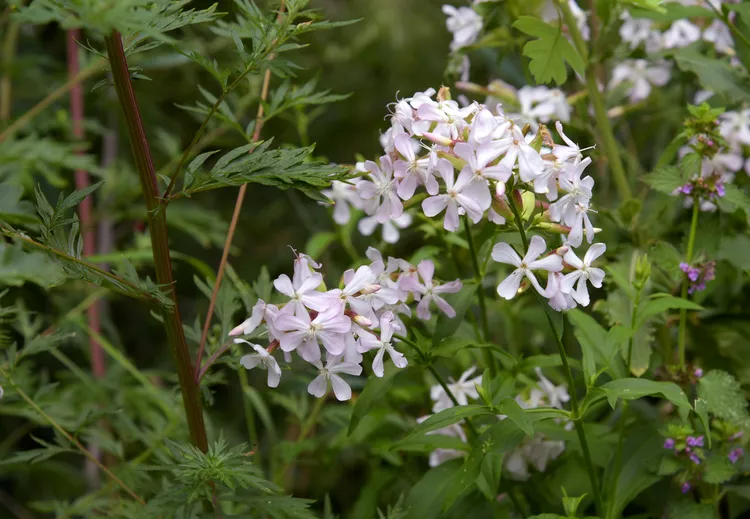
Description
Herbs known as soapworts can be annual or perennial and have underground rhizomes. The plants could be spreading or upright. Their leaves are simple, tapering or roughly oval in form. There’s a chance that the stems and leaves are hairy or waxy. The five-petaled blossoms are colored in colors of white, pink, pastel purple, and red. The fruit resembles a capsule filled with many dark-brown seeds.
Habitat
Soapworts are endemic to Eurasia, while several weedy species have spread to other regions. A few of them are grown for their beautiful flowers.
Uses
Historically, soapwort has been used to wash delicate clothes and as a light cleanser for the body. When taken orally, soapwort’s saponins function as an expectorant, irritating the mucous membrane, triggering the cough reflex, and boosting mucus production—all of which facilitate anticipation.

Major species
There are various cultivated forms of rock soapwort, often called tumbling Ted (S. ocymoides), which is a trailing species with clusters of pink to deep red flowers. The tiny alpine specimen known as pygmy pink (S. pumilio) is occasionally cultivated in rock gardens.
Growing to a height of one meters (3 feet), common soapwort, sometimes known as bouncing Bet (S. officinalis), is extensively naturalized in eastern North America. Its sap can be used in place of soap, and its roots have been utilized medicinally.
Plant Care
- Light
Plant your soapwort in full light for a dense plant with lots of flowers. In warmer climates, it may also withstand some shade, however the plant may not be as luxuriant. Ultimately, the biggest and most abundant flowers will come from six to eight hours of direct sunlight.
- Soil
Most types of soil can support soapwort growth, provided that the combination drains well. On the other hand, soapwort may grow wildly and become unkempt and floppy if planted in rich, damp soil. A little more rock in the soil can help to slow down its growth.
- Water
Similar to other herbs, soapwort benefits from regular moisture but, once established, can withstand brief periods of dryness. Make sure to thoroughly wet the soil when you water the plant, and then wait until it is dry to the touch—not completely dry—before watering it once more.
- Temperature and Humidity
Hardy plants like soapwort can withstand a wide variety of environmental conditions within their growth zones. The plant requires at least 130 days without frost each year, however it may withstand extremely low winter temperatures. Mulch can help protect a plant from winter damage in colder climes.
- Fertilizer
Plants of soapwort can thrive on their own for years after they are established. Consider using an all-purpose fertilizer to fertilize your plant once a year in the spring if you have poor soil. Give it a small amount of food; too much nutrients can harm the plant and prevent it from growing.
Table





